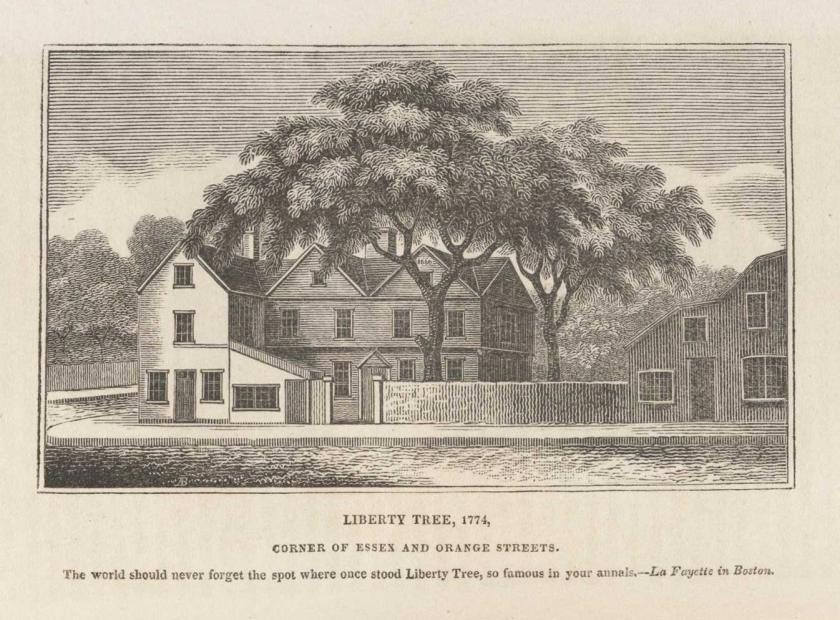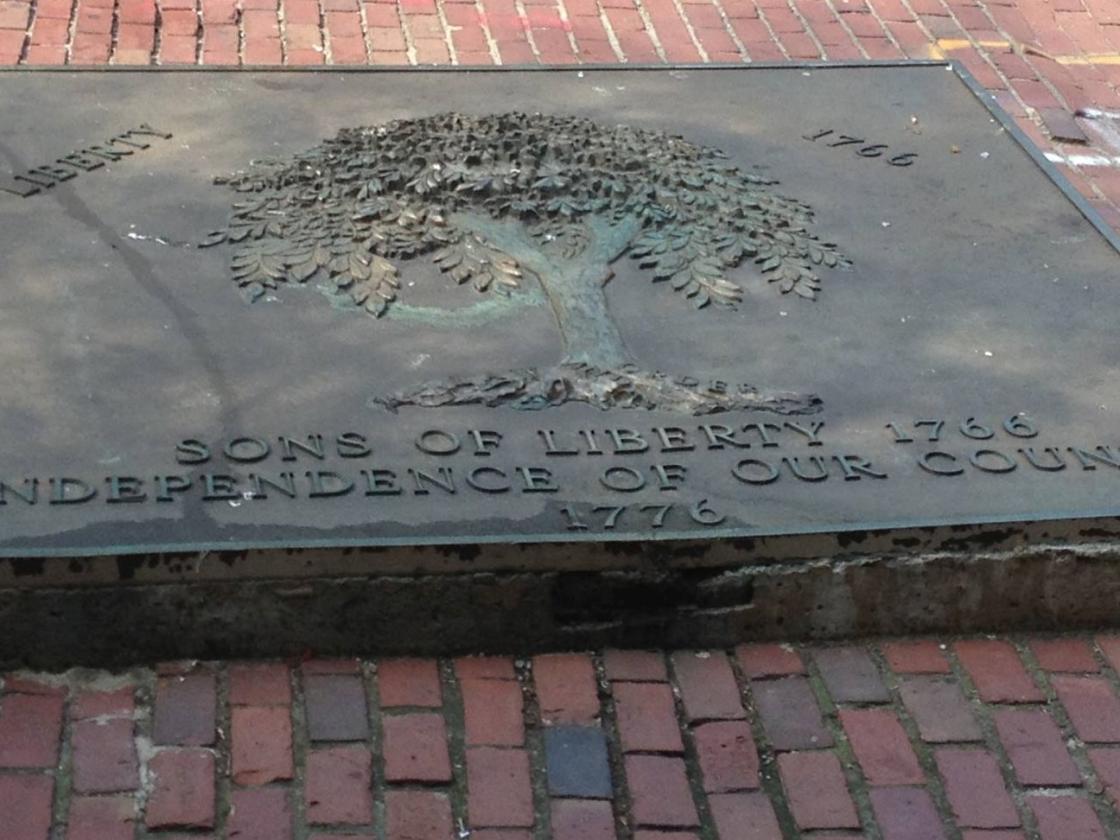The Liberty Tree
2 Boylston Street
Boston, MA 02116
United States
The Liberty Tree was a large elm — planted in 1646, it was already a venerable specimen on the eve of the American Revolution — near the Boston Common that became a popular meeting place for the Sons of Liberty, a secret society advocating for the rights of colonists against British taxation and rule. Later, other towns across colonial America began designating their own liberty trees.

The first large protest at Boston’s Liberty Tree was held in 1765, when an effigy of stamp collector Andrew Oliver was hung from the branches alongside a green painted boot with a devil holding a paper reading “what greater joy did ever New England see than a stampman hanging on a tree!” A crowd of protestors took the effigy of Oliver to his house, where they proceeded to behead and burn the likeness before assaulting his home. Oliver resigned as the stamp collector in response.

When the Stamp Act was repealed, lanterns were hung in the Liberty Tree’s branches, and many other protests and public displays took place throughout the 1760s and 1770s. However, in 1775, during the Siege of Boston, Boston Loyalists and British soldiers cut the stately elm down and burned it; after Patriots regained control of Boston in 1776, a liberty pole was erected over the stump. Today, the site is marked by a small plaza and commemorative plaque.
